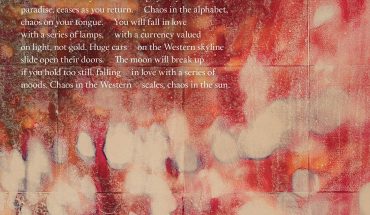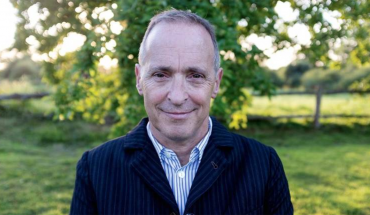Fashion designer Justin LeBlanc explores his own story through art
by Susanna Klingenberg | photography by Gus Samarco
Step into Justin LeBlanc’s new exhibition at CAM Raleigh, Probable Normal Hearing, and you step into a story. It’s likely an unfamiliar story—disorienting, surreal, even haunting—unless you’re part of the five percent of the population that is deaf. But good storytelling can disorient and reorient, create distance from its audience and inspire empathy. Probable Normal Hearing strikes that balance, telling a story that’s challenging, vulnerable and intensely personal.
LeBlanc was born deaf, though it wasn’t discovered for several years. The last note scribbled on his medical chart before his doctor realized the diagnosis was “probable normal hearing.” That prominent and unreachable word so long at the top of his audiology charts—“normal”—haunted his early years. In retrospect, LeBlanc says, “I tried to be normal for so long that I forgot what it was like to be Deaf.”
Justin’s story
LeBlanc received a cochlear implant at the age of 18, which provided an artificial semblance of sound. He studied architecture, found his calling in fashion design, met great success on the 2013 season of Project Runway and launched his own clothing label. But he says he is only now, at age 33, beginning to reckon with his identity as a deaf person: “Deaf culture and hearing culture… I don’t belong to either of those. I have one leg in one and one leg in the other.”
This space between cultures frames the arc of his CAM installation, which he designed to inspire dialogue with visitors. “First and foremost,” says LeBlanc, “Probable Normal Hearing is an exhibition for the Deaf. And I want to invite the hearing population to be part of the Deaf experience.”
The art
To that end, every piece in the exhibition explores a question that members of the Deaf community are frequently asked: Can you repeat after me? Can you see me? What can you hear? What is your favorite sound?
LeBlanc is quick to answer the last question: his favorite sound is silence. He wove a play on the old adage “silence is golden” through the exhibition’s narrative to emphasize his point. Twenty-four karat gold leaf glitters on every piece: on five percent of the 3D cast and printed ears; on thread connecting pairs of ears, symbols of the micro-community of the Deaf and Hard-of-Hearing; on the oversize audiology charts—LeBlanc’s own—showing his range below normal; on a single pair of ears, dripping with gold, that represent the artist’s experience.
As LeBlanc unfolds his story in the exhibition, it becomes clear that “normal” is no longer his goal. He believes the Deaf experience should be celebrated as a way of being in the world that opens fresh possibilities and enables unexpected strengths. And though this exhibition is a departure from LeBlanc’s usual work for the runway, those familiar with his fashion design will still recognize the artist’s aesthetic here, low on color and high on texture and shape.
Exclusive designs
LeBlanc designed the exhibition specifically for CAM, and Gab Smith, CAM’s Executive Director, says the museum welcomes the opportunity to spotlight the work of talented artists outside their usual medium. “We love creating opportunities for artists to think in new ways about making art.” In celebrating LeBlanc for thinking differently about his art, CAM is also celebrating an expansive approach to who makes and shows art in a professional setting. These opportunities are much less available to people with disabilities, due to either access issues or unfounded assumptions about their talent.
Betsy Ludwig, Executive Director of Arts Access NC, applauds CAM’s thoughtful inclusivity: “Exhibiting work and presenting content made by people with disabilities is an important part of arts inclusion. As one advocacy saying goes, ‘We want not only to be guests at the table, but also to help plan the meals and cook the food.’”
Probable Normal Hearing runs through August 18 at CAM Raleigh. LeBlanc wants everyone to feel welcome at his exhibition. To make the most of it, he advises with a grin, “Just be silent.”







